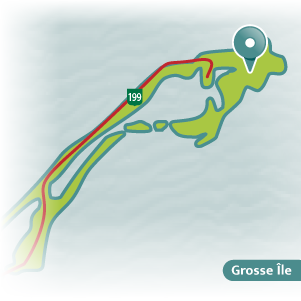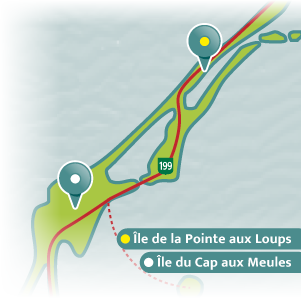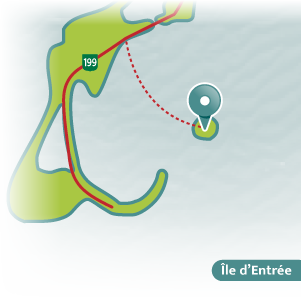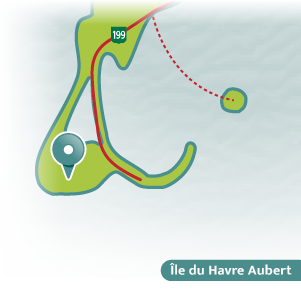
Grosse Île
1Rocher aux Oiseaux (Bird Rock)
Located about 30 km (20 mi.) north of Grosse-Île, Bird Rock is a migratory bird sanctuary that can only be reached by boat, but it is impossible to land there. Even the tiniest cracks in the cliffs are occupied: black-legged kittiwakes, herring gulls, razorbills, common murres and thick-billed murres all share the same space. North America’s second largest northern gannet colony is also found here, with 7500 nesting couples.
Brion Island
Uninhabited for the last 50 years, Brion Island is 15 km (10 mi.) off Grosse-Île. Accompanied by a naturalist guide, you can explore this island, one of the only two ecological reserves in Québec that are open to the public. About 140 bird species make their home here. Some of the birds that nest in the cliffs are common eiders, Atlantic puffins, great cormorants and arctic terns. The forest is inhabited by Swainson’s thrushes, yellow-bellied flycatchers, ruby-crowned kinglets, winter wrens and blackpoll warblers.






